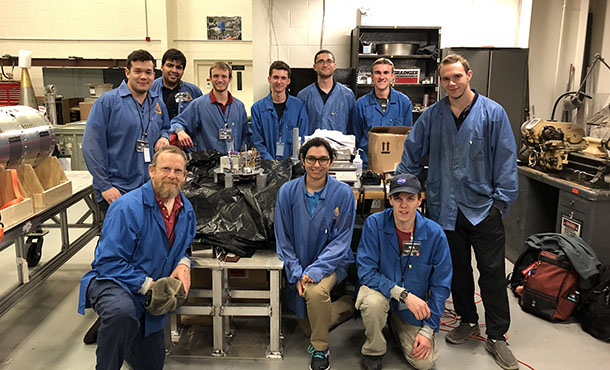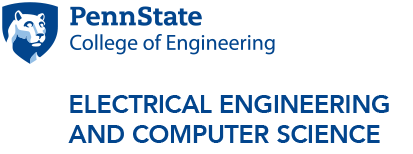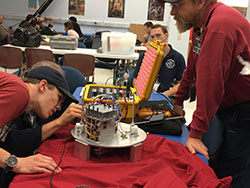
The Student Space Laboratory structural team
Student-engineered rocket creates launchpad for experience
04/13/2019
Andøya, Norway - After 18 months of painstaking design and construction, a team of engineers witnessed equipment they built take to the skies, attached to a rocket launched in Norway. But they weren’t NASA scientists - they were undergraduate students in the Penn State College of Engineering.
As members of the Student Space Laboratory Program (SSPL), a student-run organization, they were a part of a NASA-sponsored project, the RockSat-XN program, created through the government entity’s Grand Challenge Initiative. One of the seven rockets launched that day was designated exclusively for student experimentation and design. After months of hard work, the students created measurement devices to accompany that rocket, launched in the Arctic Circle.
Specific to the rocket’s location, it is also the site of the much-beloved aurora borealis.
The structural team, one of many student groups on the project, comprised of mechanical engineering majors Carl Smeltz, Sasha Yaskolko, and Cole Karschner, electrical engineering major Erica Venkatesulu and aerospace major Vignesh Rathnakumar, aimed to glean new information about this phenomena with their payload design.
The G-Chaser Rockets’ overall mission was to better understand the ionosphere, a unique layer of the atmosphere.
“We wanted to map electron winds in that area – that’s what causes the aurora borealis. These electron winds haven’t really been mapped before, because satellites are too high to see it and hot air balloons are too low,” Smeltz said. “So with this rocket, we wanted to learn something new that no one has ever done before.”
When the rocket returned, the team was able to extract some new data about the conditions in the ionosphere. “It wasn’t perfect data, but we got some new information! It was an accomplishment for us,” Smeltz said.
But beyond the scientific knowledge gained during this journey, Smeltz and the team believe their cultural and professional skills reached new heights. With students hailing from Japan, Norway, and the United States, their project gave them hands-on experience working internationally.
“Since all our payloads were going on the same rocket, we really had to work together to make sure everyone’s designs and experiments meshed,” he said. “If our instruments were too close together, they could interfere, so we made some design changes or recommended ones for other teams so we could all be happy with our experiments.”
Looking ahead to his future, Smeltz is confident the hard and soft skills he gained will be useful in his career. “It’s a big section of my resume, that’s for sure!” he enthused. “It was a lot of collaboration and cross-disciplinary skills involved.”
Smeltz is quick to reiterate the impact of cross-discipline work in this area. He said, “One engineer can’t make a rocket on their own. There’s mechanical structures, electrical parts, analyzing the data using computer science. I have a big sense of accomplishment on this project, because my part helped the whole team create something we were really proud of.”




